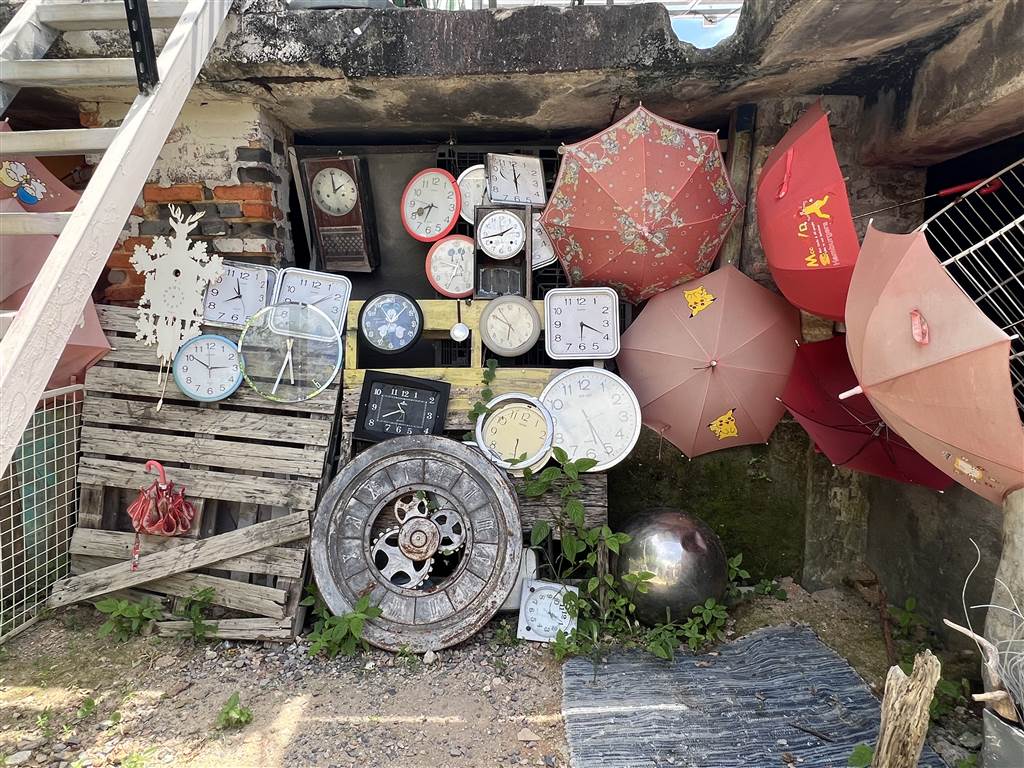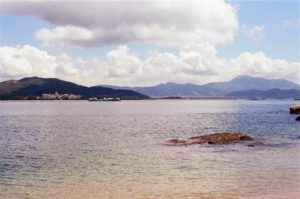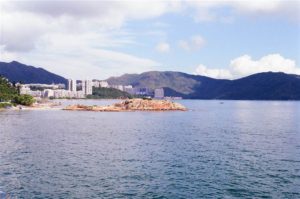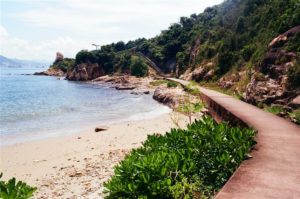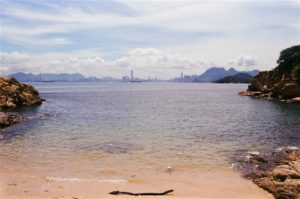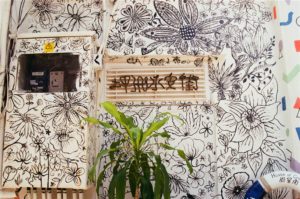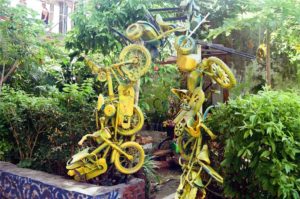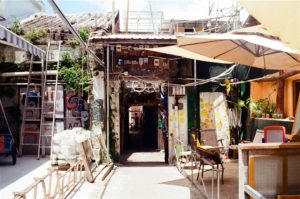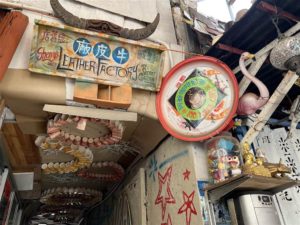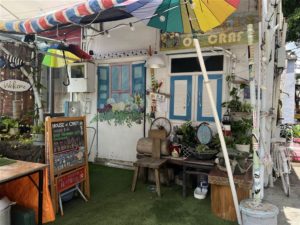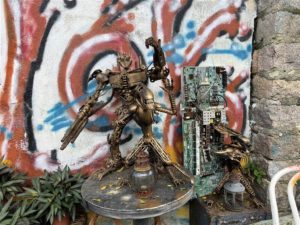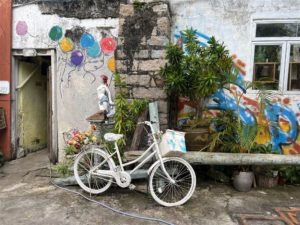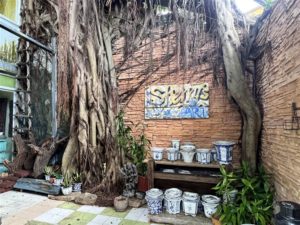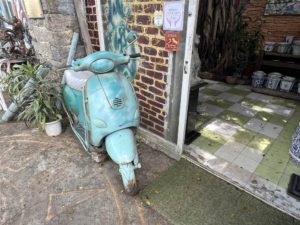A First Walk in Peng Chau
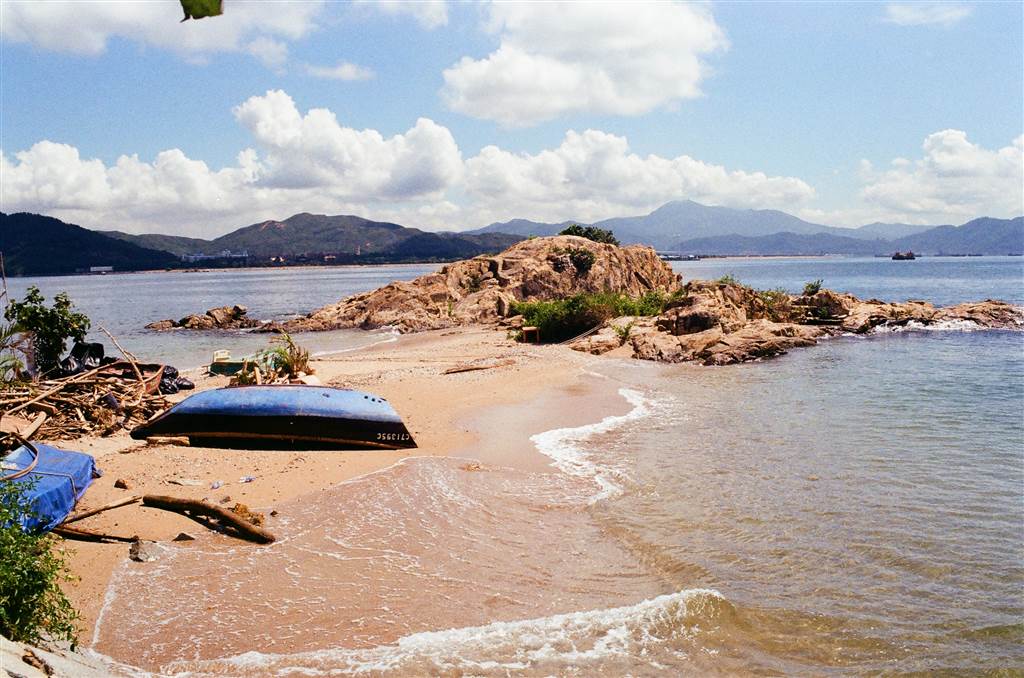
“So what’s the plan for our walk in Peng Chau?” My besties finally had a chance to get together for a day trip to Peng Chau. “No plan, let’s just walk around aimlessly.”
Sounds like a plan, and it turned out to be a good one.
About Peng Chau
Although there is no official account of Peng Chau’s ancient history, it is widely believed that the earliest settlement might have taken place as early as the Tang and Song Dynasties.
Fast forward to the Qing Dynasty, Peng Chau has developed much further. At the time, the surnames of Lu, Chung and Lam settled down in the villages of Peng Chau. Booming commerce and fishing industries has made Peng Chau Bay a busy trading port.
At one point during the early 20th century, Peng Chau was known for its handicrafts and industries. There were a total of eleven lime kiln factories in Peng Chau. “Lime was produced by burning oyster shells, clam shells and coral, and was widely used in construction, paper-making, dyes and ship maintenance.” (Hong Kong Tourism Board) The industry met its decline as concrete became the predominant material for building construction later in the 20th century. Finally, the largest match factory of Southeast Asia in 1973, the Great China Match Factory, also set foot in Peng Chau.
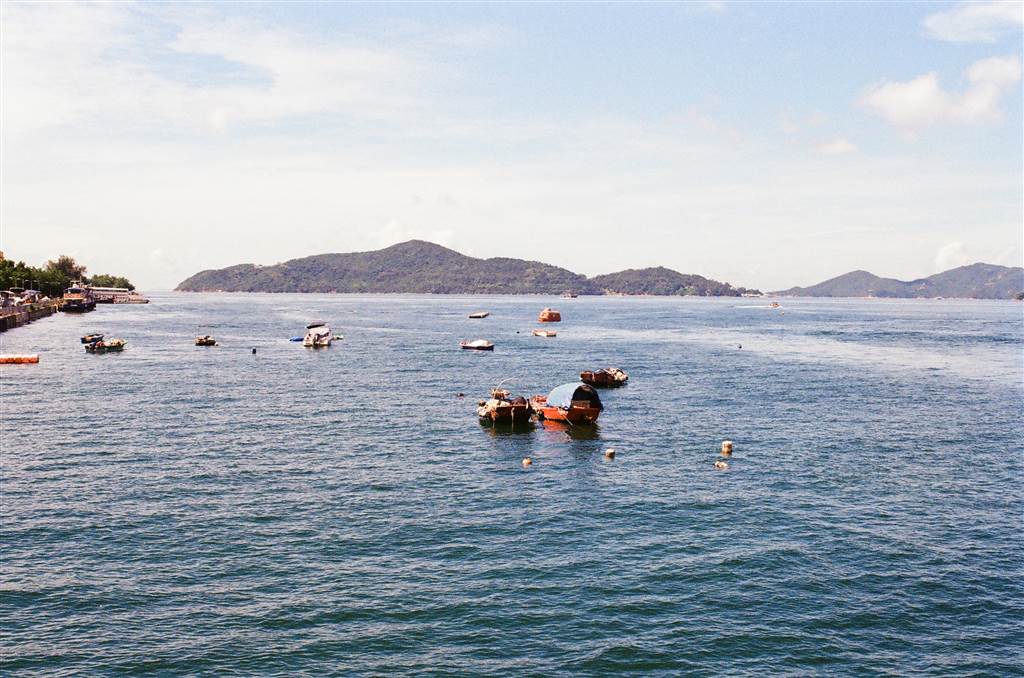
Our Walk
After getting off the ferry, we went northward on the western coast of Peng Chau and first arrived at the Tai Lei Island. The Tai Lei bridge to the island is itself a landmark. The island acquired its name due to the former plaster factory in there.
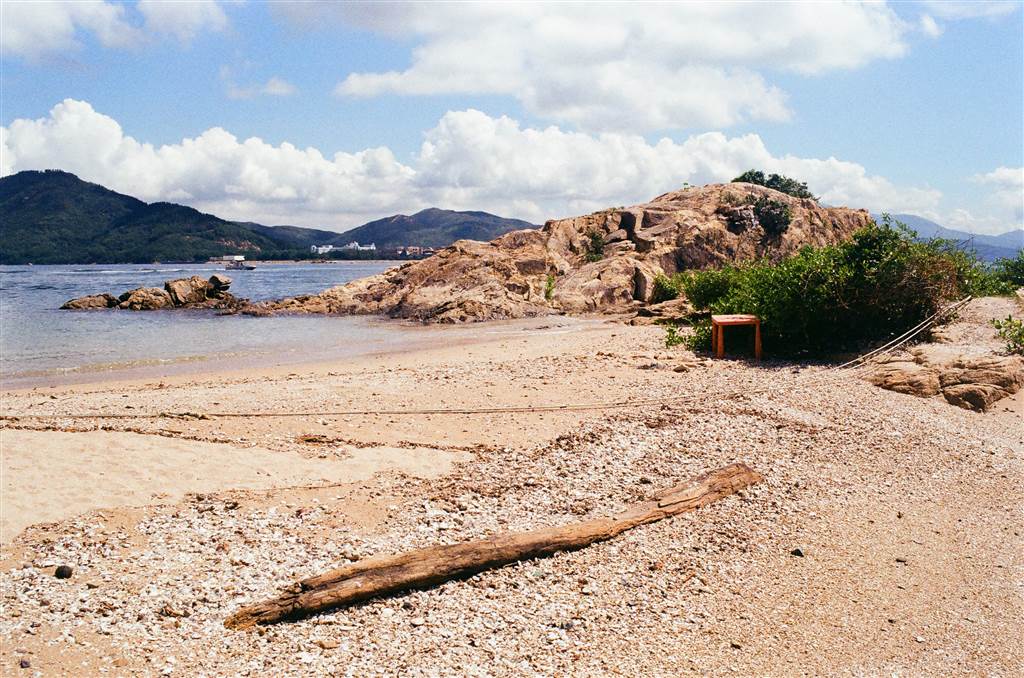
The mere views of the ocean soothed us amidst the heat of a bright midsummer morning. Descriptions on-site states that white dolphins, a species native to Hong Kong, can be sighted in the shores of Peng Chau.
The Tai Lei Island serves only as a garbage transfer spot now and the only other facility there is a water treatment plant. It is a nice location for views at the shore, however.
We came back on the same way, arrived back at the park and headed a trail upward. The Peng Yu trail lies next to the shrines. The next stop is the Fisherman Rock.
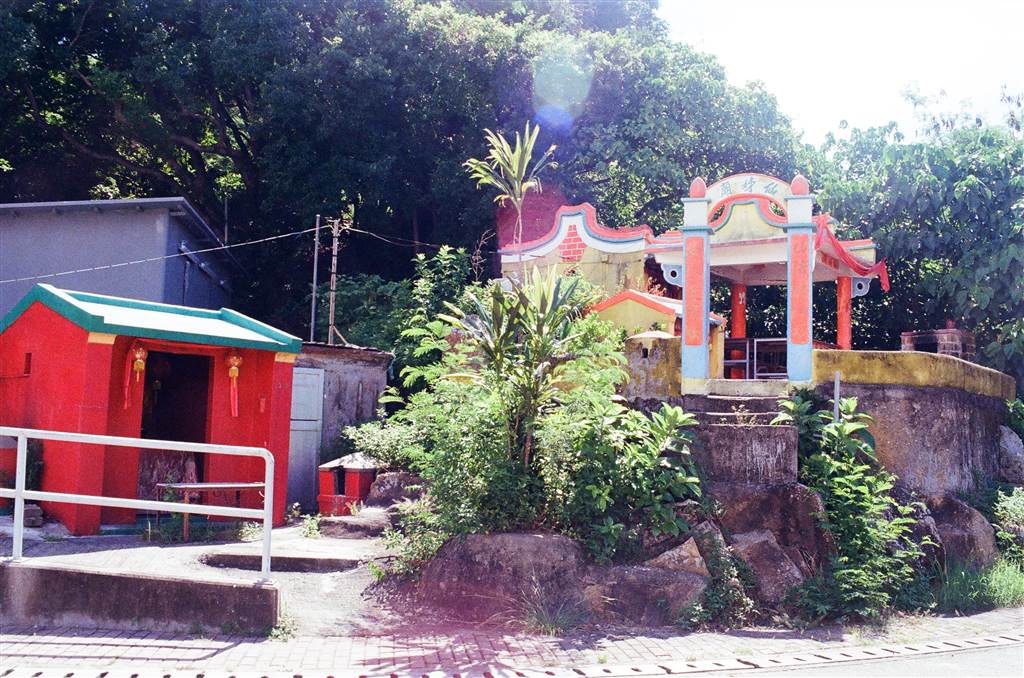
photo: the Peng Yu Trail lies next to the shrines.
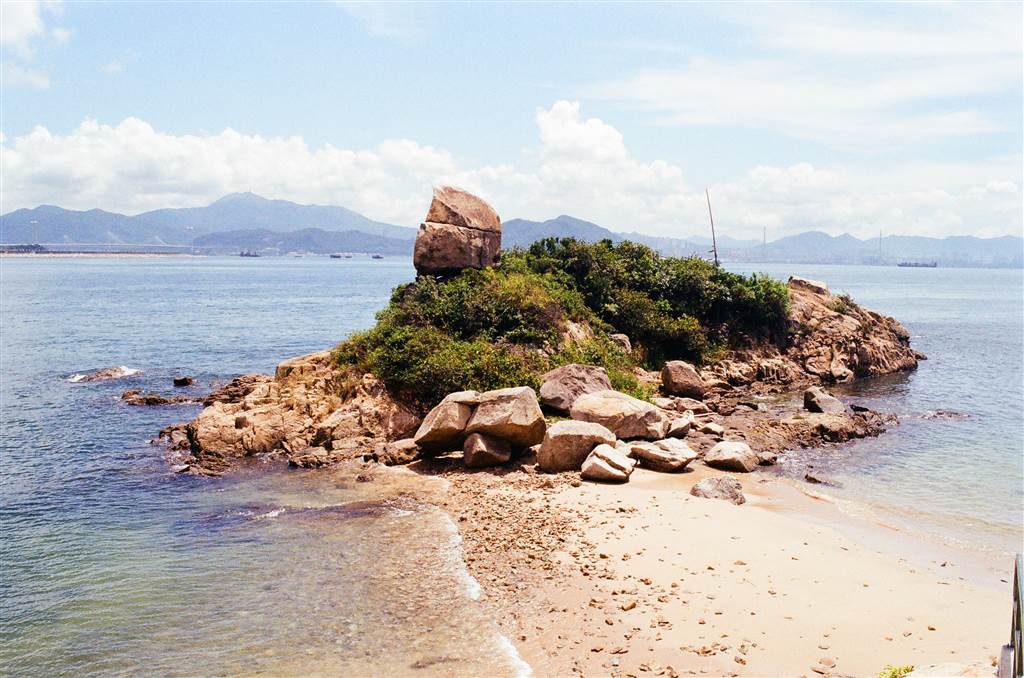
Most of the trail to the rock are coastal, and so despite the scorching sun the walk was quite easy. We saw some pretty good seaside views, and savored the walk on silky sandy beaches with pristine water. The urban skyline, with the distinctive Tsing Ma Bridge, lies afar on the horizon.
The Tung Wan Beach
To my disappointment, the Tung Wan Beach, which lies at the eastern shoreline, did not present the same pristine views as the beaches on the west coast. It being very close to residential areas, there was sighting of significant rubbish at the beach. We made a pass on this beach.
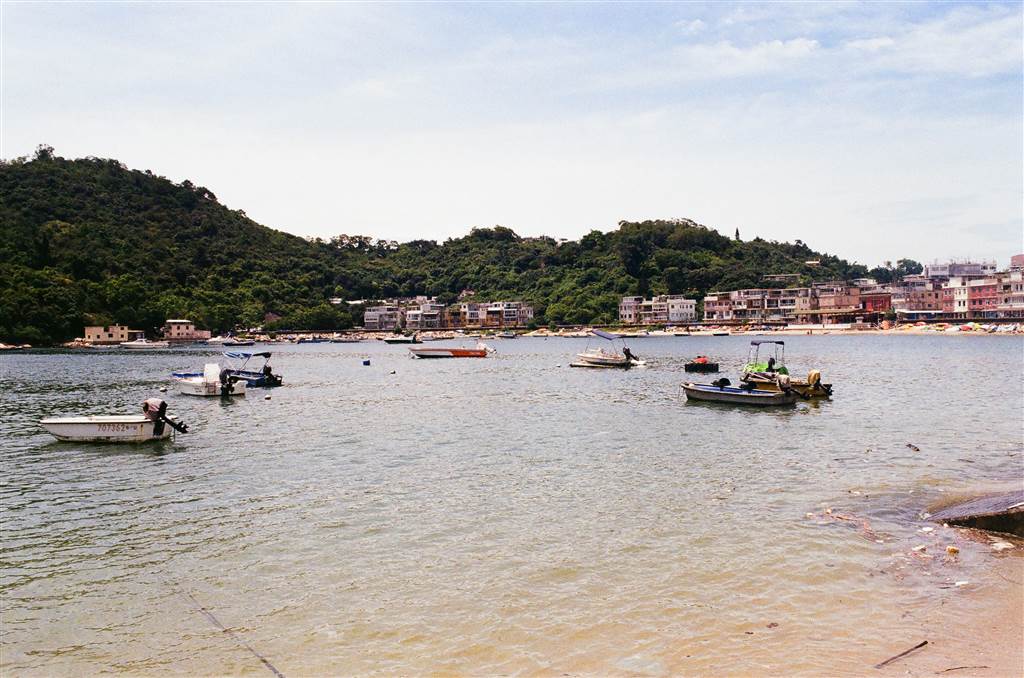
The Leather Factory (My Secret Garden)
The two leather factories in Peng Chau, Fook Yuen Leather Factory and Kwong Fat Yuen Leather Factory, began their business during the 1930s. Fook Yuen ceased operation during the years of Japanese Occupation. After WWII, it reopened its doors, but business continued to decline due to the availability of cheaper, imported foreign leather. In 1975, it finally closed down.
The Leather Factor of Peng Chau is a grade 3 historic building. The former factory ground comprises mostly of one-story buildings in the traditional Chinese vernacular architectural style, and spread over the Wing On Street area. The Asia Antique Arts & Ancient Porcelain Appraisal Center now stands on one of the former buildings of the leather factory.
As to My Secret Garden, it is an artistic venture of the residents of Peng Chau. They have gathered all sorts of discarded junk, and turned them into artwork for display at the garden. It is meant to be a community space with lots of colors and cheerfulness to go around.
Kee Sum Café
The Kee Sum Café lies in the middle of Wing On Street, which is a busy thoroughfare with most of the main commercial establishments of Peng Chau. The restaurant prides a long history of 40 years in business. Its best known dishes are the fried shrimp toast, pork chop cutlets, French toasts, and we were all very happy with our orders from the special drinks menu, including iced rose latte. Our fried pork chop udon was very good as well.
It seemed to me that the restaurant was renovated rather recently, and therefore the whole dining experience was pleasant in a hip, clean and well-managed ambiance.

Nam Wan Fishing Village
I always enjoy visiting fishing villages. According to online sources, some of the ruins of Peng Chau’s industries lie within the Nam Wan Fishing Village. We did not take a walk inside the village. For my purposes, just seeing the one single row of sun-dried fish lined up on a rope was about good enough.
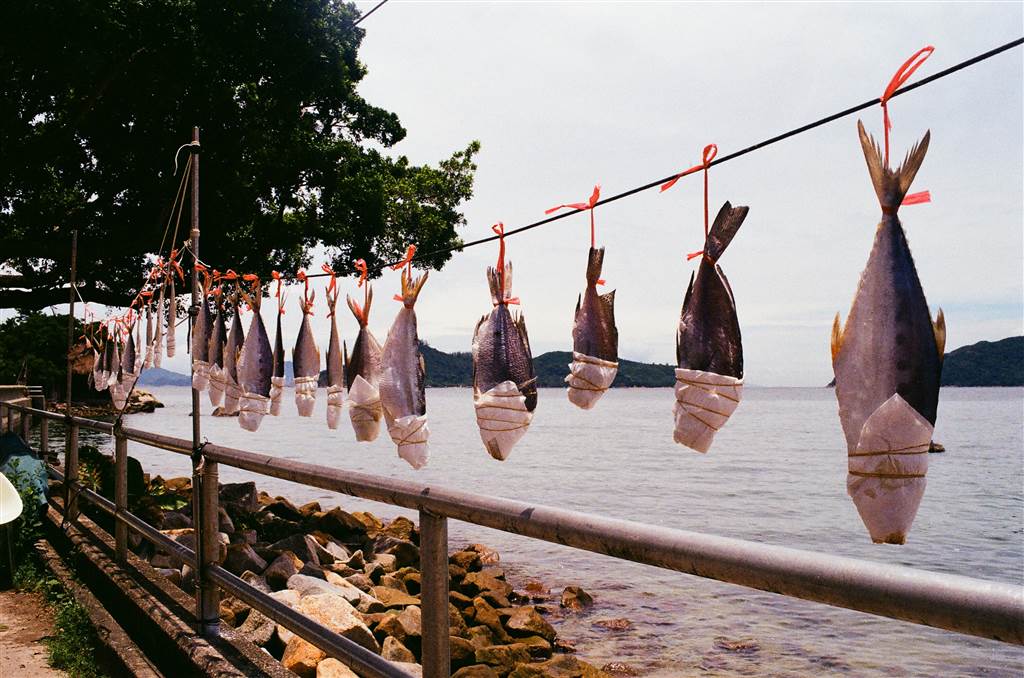
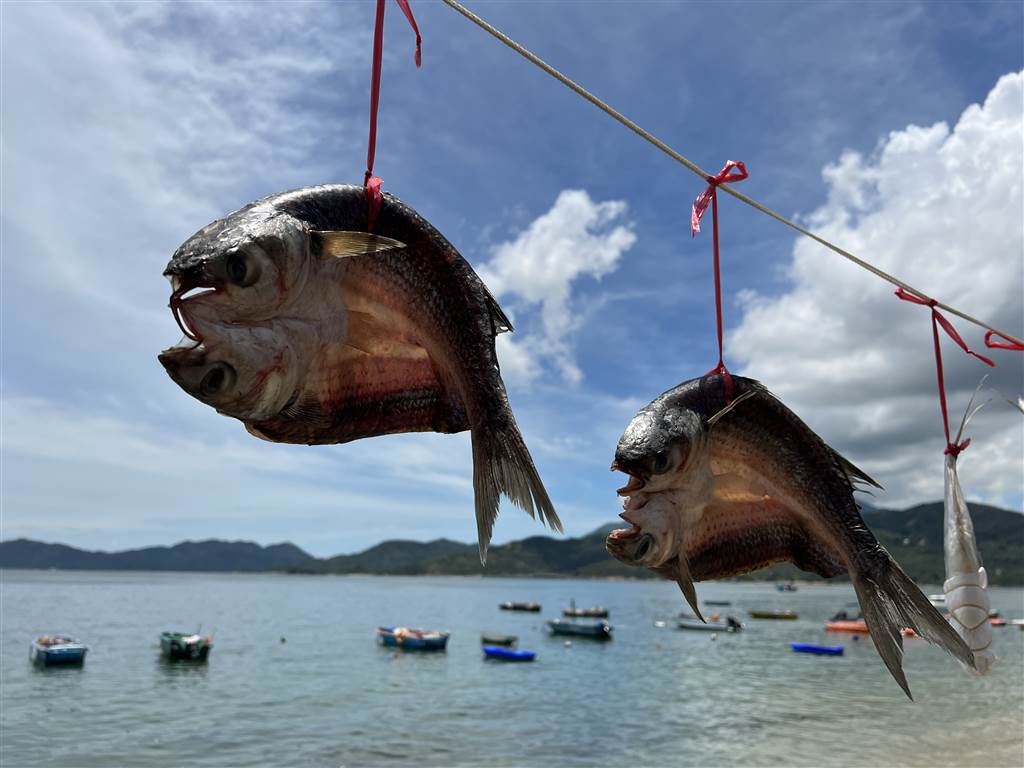
A Final Stop for Coffee at the Edible Projects
From the Nam Wan Fishing Village we headed back toward the pier, but we passed by a café with an irresistible outdoor seating area. Despite the heat, we decided to have our afternoon coffee outside. We were very much drawn to the relaxed atmosphere of this coffee shop, clearly catering to the cultured and the artsy.
The coolness of the Edible Projects goes beyond its appearance. It is in fact a social enterprise. The café hires people with autism.
Besides a standard selection of coffee, there are some pretty innovative drinks on the menu, such as frizzy water with fresh fruits. Although we did not try their food, the menu shows both creativity and commitment to healthy living. All in all, the whole café gives forth an image that in every way meets its status as a social enterprise. The staff delivered an experience that both highlights and completes my first visit to Peng Chau.
Some Afterthoughts
Of the inhabited islands that I have visited in Hong Kong so far, Peng Chau comes out as my favorite. As compared to the popular islands like Cheung Chau and Lamma, Peng Chau is a whole lot quieter. It is smaller, and perhaps also much cleaner than the other two. Yet that does not mean that Peng Chau pales in comparison in terms of character and fun things to do. There is also no lack of good food there. Finally, the speed ferry only takes about half an hour to ride between Peng Chau and Central. If I were able to afford a vacation home in the islands, Peng Chau would be my first choice.
Sources
Historic descriptions on-site.
The Wikipedia on Ping Chau (Chin).
Former Lime Kiln and Match Factory, Peng Chau, Hong Kong Tourism Board.
A One-day Trip to Peng Chau with Nine Spots to Visit, hk01.com.
